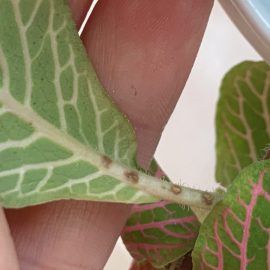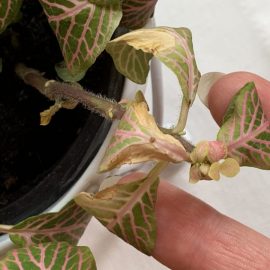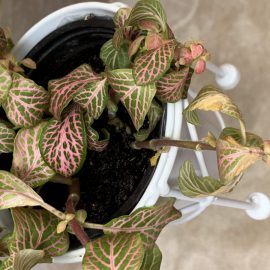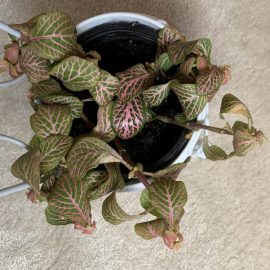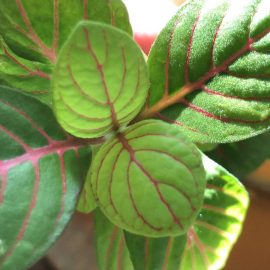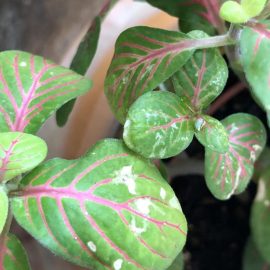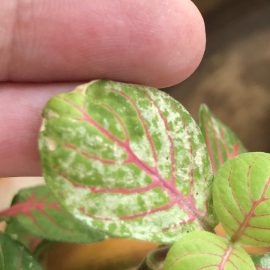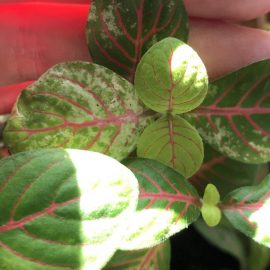Fittonia, plant care and growing guide
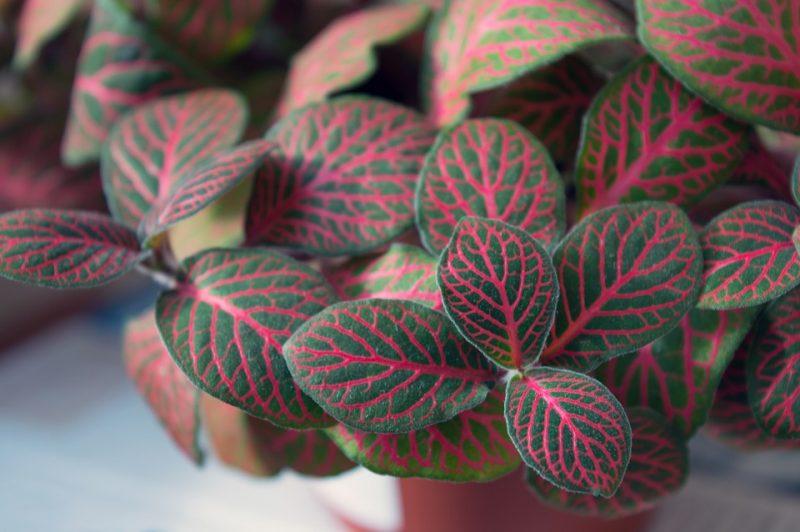
Fittonia (Fittonia spp.) popularly called the “Snakeskin Plant”, is native to the tropical forests of South America and Peru. It is a decorative plant especially thanks to its rounded leaves, with bright white, green, or purple ribs, depending on the variety and which can reach up to 10 cm in height. It remains green all year round (evergreen), it has the appearance of a bush, it has decorative leaves, while the white flowers are insignificant from a decorative point of view. It is often grown as a houseplant, in hanging or classic planters.
Species and varieties. Some of the most widespread species are Fittonia argyroneura and Fittonia verschaffelti . They are special thanks to the color of the leaves and ribs. F. argyroneura has white-silver ribs and dark green leaves, and F. verschaffelti has pink or red ribs, with olive green leaves.
Other, less common species are: Fittonia albivenis, Fittonia gigantea, Fittonia pearcei.
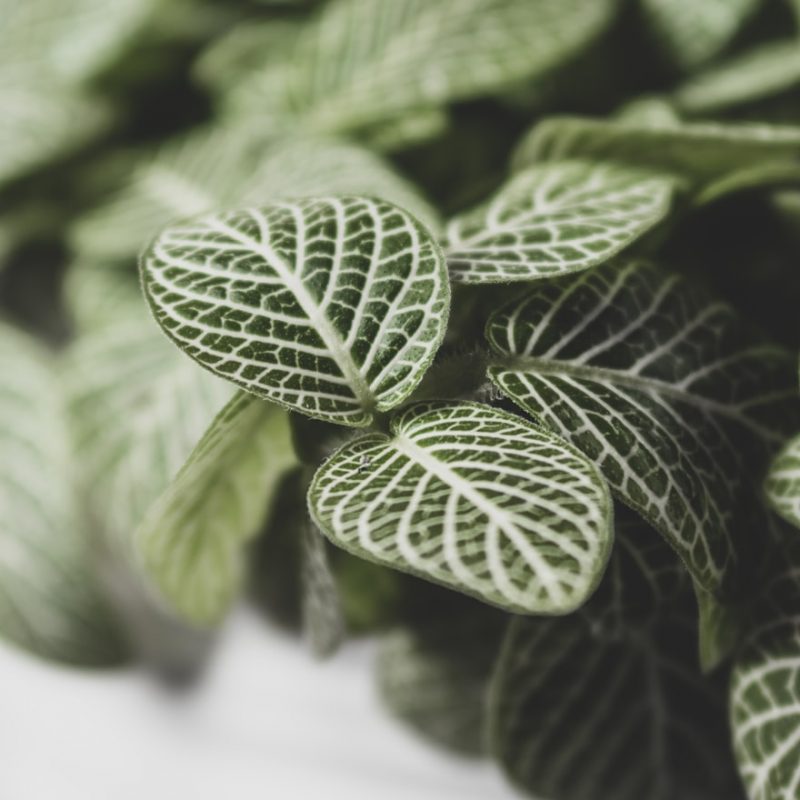
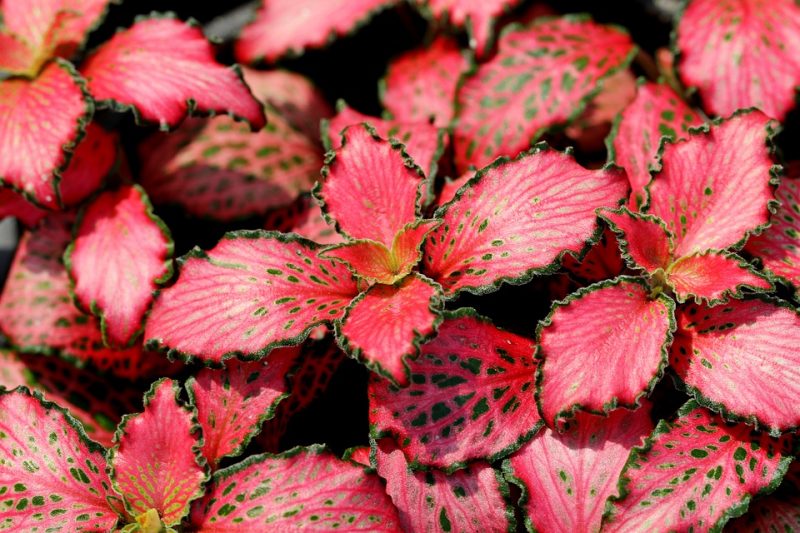
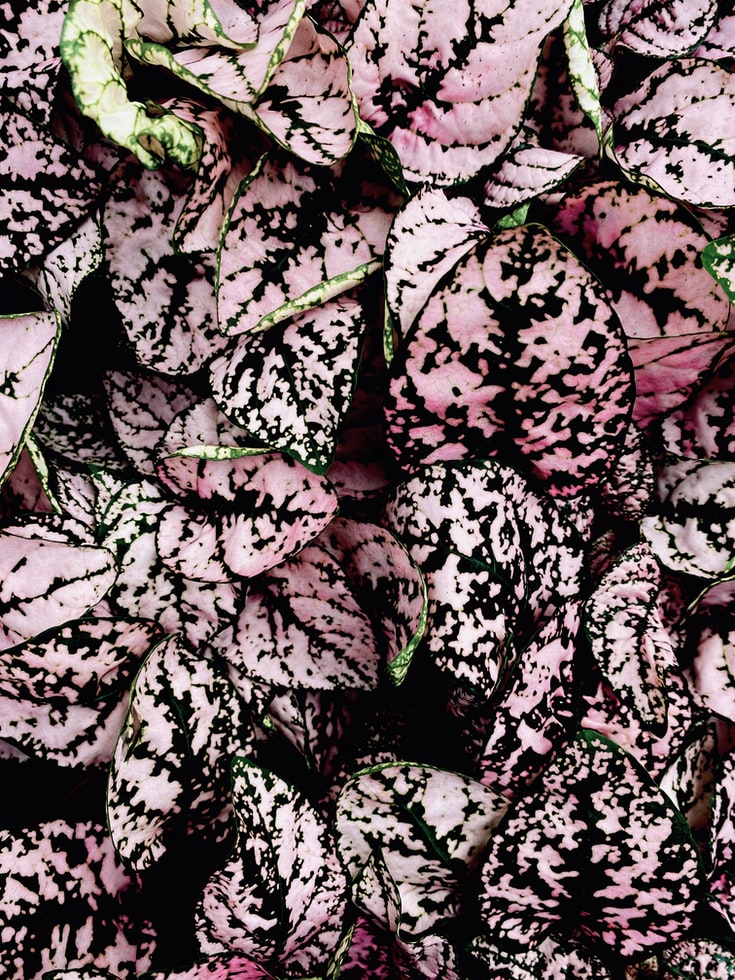
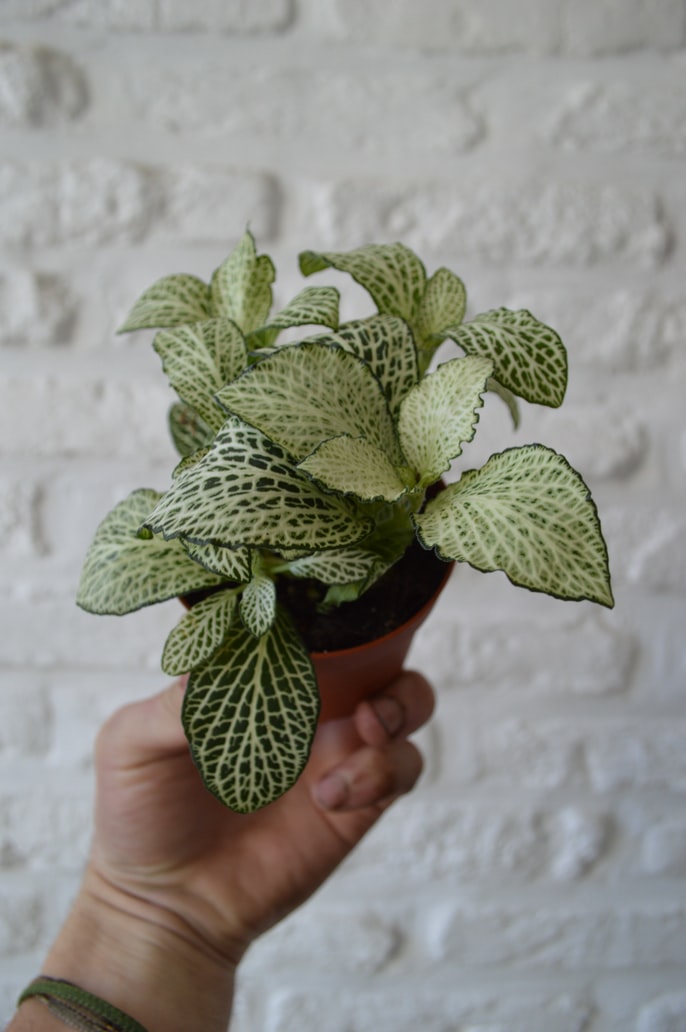
Light. Fittonia does not tolerate direct sunlight, preferring shade or partially shaded spaces. Keeping the plant in direct sunlight can cause it to lose its decorative appearance. Temperature. The optimum temperature for the development of the plant is between 25° C and 28° C, while temperatures lower than 15° C cause the leaves to fall.
Humidity. Fittonia needs moderate atmospheric humidity.
Substrate. A mixture of peat and sand must be used, which will ensure good water drainage. The substrate must be rich in nutrients, with a neutral to alkaline pH and moderate humidity.
Recommended products
-
You can find products on a different store
Change Store -
You can find products on a different store
Change Store -
You can find products on a different store
Change Store -
You can find products on a different store
Change Store -
You can find products on a different store
Change Store -
You can find products on a different store
Change Store -
You can find products on a different store
Change Store -
You can find products on a different store
Change Store -
You can find products on a different store
Change Store -
You can find products on a different store
Change Store -
You can find products on a different store
Change Store -
You can find products on a different store
Change Store -
You can find products on a different store
Change Store -
You can find products on a different store
Change Store -
You can find products on a different store
Change Store -
You can find products on a different store
Change Store -
You can find products on a different store
Change Store -
You can find products on a different store
Change Store -
You can find products on a different store
Change Store -
You can find products on a different store
Change Store -
You can find products on a different store
Change Store -
You can find products on a different store
Change Store -
You can find products on a different store
Change Store -
You can find products on a different store
Change Store
Watering. The substrate must be kept permanently moist, using moderate amounts of water at room temperature. It is recommended to reduce watering during the cold period of the year (autumn-winter), but the temperature of the space where the plant is placed should also be taken into account. These factors must be correlated. More precisely, if the plant will be watered less often, it is also recommended that the temperatures be a few degrees lower than usual.
Fertilization. It should be done through leaves, in summer, monthly or, if necessary, bimonthly, with specific fertilizers for decorative plants.
Recommended products
-
You can find products on a different store
Change Store -
You can find products on a different store
Change Store -
You can find products on a different store
Change Store -
You can find products on a different store
Change Store -
You can find products on a different store
Change Store -
You can find products on a different store
Change Store -
You can find products on a different store
Change Store -
You can find products on a different store
Change Store -
You can find products on a different store
Change Store -
You can find products on a different store
Change Store -
You can find products on a different store
Change Store -
You can find products on a different store
Change Store -
You can find products on a different store
Change Store -
You can find products on a different store
Change Store -
You can find products on a different store
Change Store -
You can find products on a different store
Change Store -
You can find products on a different store
Change Store -
You can find products on a different store
Change Store -
You can find products on a different store
Change Store -
You can find products on a different store
Change Store -
You can find products on a different store
Change Store -
You can find products on a different store
Change Store -
You can find products on a different store
Change Store -
You can find products on a different store
Change Store
Repotting. It is done in spring, only if necessary, using a pot that is larger in diameter than the initial one. To ensure proper drainage, it is recommended that the new pot have holes and that the substrate be a mixture of peat and sand. The plant must be transferred to the new pot without removing the soil from the roots. After transplanting, it should be watered moderately, so that the substrate remains moist.
Propagation. Fittonia is propagated through cuttings. Seedlings are obtained in spring, from the tips of shoots that have a minimum of 4 leaves. They should be rooted in a solid substrate such as perlite, peat, or even in water with rooting stimulants, and within two weeks, they will form roots. Another method of propagation, though less used, is the one through air layering, done during the summer.
Recommended products
-
You can find products on a different store
Change Store -
You can find products on a different store
Change Store -
You can find products on a different store
Change Store -
You can find products on a different store
Change Store -
You can find products on a different store
Change Store -
You can find products on a different store
Change Store -
You can find products on a different store
Change Store -
You can find products on a different store
Change Store -
You can find products on a different store
Change Store -
You can find products on a different store
Change Store -
You can find products on a different store
Change Store -
You can find products on a different store
Change Store -
You can find products on a different store
Change Store -
You can find products on a different store
Change Store -
You can find products on a different store
Change Store -
You can find products on a different store
Change Store -
You can find products on a different store
Change Store -
You can find products on a different store
Change Store -
You can find products on a different store
Change Store -
You can find products on a different store
Change Store -
You can find products on a different store
Change Store -
You can find products on a different store
Change Store -
You can find products on a different store
Change Store -
You can find products on a different store
Change Store
Diseases and pests. The most common pests are aphids and mites that must be controlled with specific insecticides. The most common diseases are those caused by excessive watering that causes root rot or the rotting of aerial organs.
Recommended products
-
You can find products on a different store
Change Store -
You can find products on a different store
Change Store -
You can find products on a different store
Change Store -
You can find products on a different store
Change Store -
You can find products on a different store
Change Store -
You can find products on a different store
Change Store -
You can find products on a different store
Change Store -
You can find products on a different store
Change Store -
You can find products on a different store
Change Store -
You can find products on a different store
Change Store -
You can find products on a different store
Change Store -
You can find products on a different store
Change Store -
You can find products on a different store
Change Store -
You can find products on a different store
Change Store -
You can find products on a different store
Change Store -
You can find products on a different store
Change Store -
You can find products on a different store
Change Store -
You can find products on a different store
Change Store -
You can find products on a different store
Change Store -
You can find products on a different store
Change Store -
You can find products on a different store
Change Store -
You can find products on a different store
Change Store -
You can find products on a different store
Change Store -
You can find products on a different store
Change Store
In addition:
- the flowers should be cut / removed as soon as they appear to stimulate plant growth.
- the plant should be permanently cleaned of dry leaves and stems.
- the plant should be placed in shady places.
- the plant has to be moderately watered, so that the soil will be permanently damp.
- the stems with very few leaves should be cut to have a length of 5-7 cm to stimulate the growth of new leaves.














































































































































































































































































































































































































































